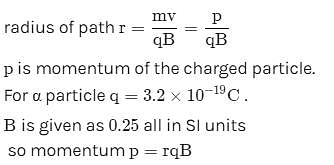QUIZ 1:Dual Nature Of Matter(#freetestseries) - JEE MCQ
15 Questions MCQ Test - QUIZ 1:Dual Nature Of Matter(#freetestseries)
When a metallic surface is illuminated with radiation of wavelength λ, the stopping potential is V. If the same surface is illuminated with radiation of wavelength 2 λ, the stopping potential is 4/V. The threshold wavelength for the metallic surface is [NEET 2016]
Photons with energy 5 eV are incident on a cathode C in a photoelectric cell. The maximum energy of emitted photoelectrons is 2 eV. When photons of energy 6 eV are incident on C, no photoelectrons will reach the anode A, if the stopping potential of A relative to C is [NEET 2016]
| 1 Crore+ students have signed up on EduRev. Have you? Download the App |
The de Broglie wavelength of an electron accelerated to a potential of 400 V is approximately [Karnataka CET 2016]
A photon of energy 10.2 eV collides inelastically with a Hydrogen atom in ground state. After a certain time interval of few micro seconds another photon of energy 15.0 eV collides inelastically with the same hydrogen atom, then the observation made by a suitable detector is [IIT JEE, 2005 Screening]
According to Einstein’s photoelectric equation, the plot of the kinetic energy of the emitted photoelectrons from a metal Vs the frequency, of the incident radiation gives a straight line whose slope: [AIEEE 2004]
Light of wavelength λA and λB falls on two identical metal plates A and B respectively. The maximum kinetic energy of photoelectrons in KA and KB respectively, then which one of the following relations is true ? (λA = 2 λB) [MH CET 2014]
If the kinetic energy of the particle is increased to 16 times its previous value, the percentage change in the de-Broglie wavelength of the particle is [AIPMT 2014]
When the energy of the incident radiation is increased by 20%, the kinetic energy of the photoelectrons emitted from a metal surface increased from 0.5 eV to 0.8 eV. The work function of the metal is [AIPMT 2014]
A photocell is illuminated by a small bright source placed 1 m away. When the same source of light is placed 1/2 m away , the number of electrons emitted by photocathode would [AIEEE 2005]
Statement-1 : When ultraviolet light is incident on a photocell, its stopping potential is V0 and the maximum kinetic energy of the photoelectrons is Kmax . When the ultraviolet light is replaced by X-rays, both V0 and Kmax increase.
Statement-2 : Photoelectrons are emitted with speeds ranging from zero to a maximum value because of the range of frequencies present in the incident light.
The work function of metals is in the range of 2 eV to 5eV. Find which of the following wavelength of light cannot be used for photoelectric effect. (Consider, Planck constant = 4 × 10-15 eVs, velocity of light = 3 × 108m/s) [WB JEEM 2015]
Light of two different frequencies whose photons have energies 1 eV and 2.5 eV respectively, successively illuminate a metallic surface whose work function is 0.5 eV. Ratio of maximum speeds of emitted electrons will be [Karnataka CET 2015]
The maximum kinetic energy of the photoelectrons depends only on [Karnataka CET 2014]
An α-particle moves in a circular path of radius 0.83 cm in the presence of a magnetic field of 0.25 Wb/m2. The de Broglie wavelength associated with the particle will be [CBSE AIPMT Preliminary 2012]
After absorbing a slowly moving neutron of mass mN (momentum ~ 0) a nucleus of mass M breaks into two nuclei of masses m1 and 5m1 (6m1 = M + mN), respectively. If the de Broglie wavelength of the nucleus with mass m1 is λ, the de Broglie wavelength of the other nucleus will be [AIEEE 2011]


















